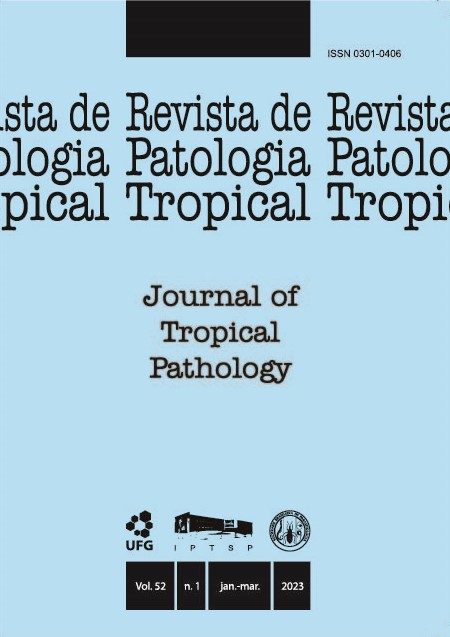Spatial distribution of leprosy in municipalities of the state of Goiás in the year 2020
DOI:
https://doi.org/10.5216/rpt.v52i1.75099Abstract
Leprosy is a chronic infectious disease caused by an acid-resistant bacillus called Mycobacterium leprae and the disease is characterized by its slow multiplication, with an excessively long incubation period. The objective of the research was to evaluate the spatial distribution of leprosy cases among the municipalities of the State of Goiás in 2020. This is a descriptive study and the data collection took place from the Notifiable Diseases Information System (SINAN) in November, 2021 and it considered the diagnosis´ year and the patient’s municipality of residence. The following indicators were adopted in the analysis: a) annual prevalence rate per 10,000 inhabitants; b) annual rate of new cases detection in the general population; and c) annual rate of new cases detection in individuals under 15 years of age, these last two per 100,000 inhabitants. The analysis of the spatial occurrence pattern of leprosy in Goiás State municipalities was carried out in the free software Terraview version 4.2.2. A higher prevalence of distribution of the gross rate of the disease was observed in the Central-North and Central-West macro-regions, with a concentration of cases also in the Northeast region of the State. From the 246 Goiás municipalities, 68.7% (n = 169) had cases of leprosy, 18.3% (n = 45) were in a situation of hyperendemia and 23.2% (n = 57) had a very high detection coefficient. Considering the rate of detection in those people under 15 years of age, only 11 municipalities (4.5%) were in a situation of hyperendemia and 1.2% (n = 3) had a very high detection coefficient (5.00 to 9.99/ 10.000 inhabitants). The current investigation indicates the maintenance of leprosy hyperendemic areas in the State of Goiás, when compared to previous studies. This finding highlights the importance of readjustment of leprosy management and assistance in municipalities at greater risk of leprosy hyperendemicity in order to interrupt the M. leprae transmission chain.
KEY WORDS: Leprosy; prevalence; spatial distribution; Goiás State.
Downloads
Downloads
Additional Files
Published
How to Cite
Issue
Section
License
The manuscript submission must be accompanied by a letter signed by all authors stating the full name and email address, confirming that the material has not been published or is under consideration for publication elsewhere, and agreeing to transfer copyright in all media and formats for Journal of Tropical Pathology. The authors will not be paid for published articles. They are solely responsible for the content of those articles, even if the Editor holds the right to adjust them to the norms of the journal.
The reviewers will not be paid for the peer review process.

